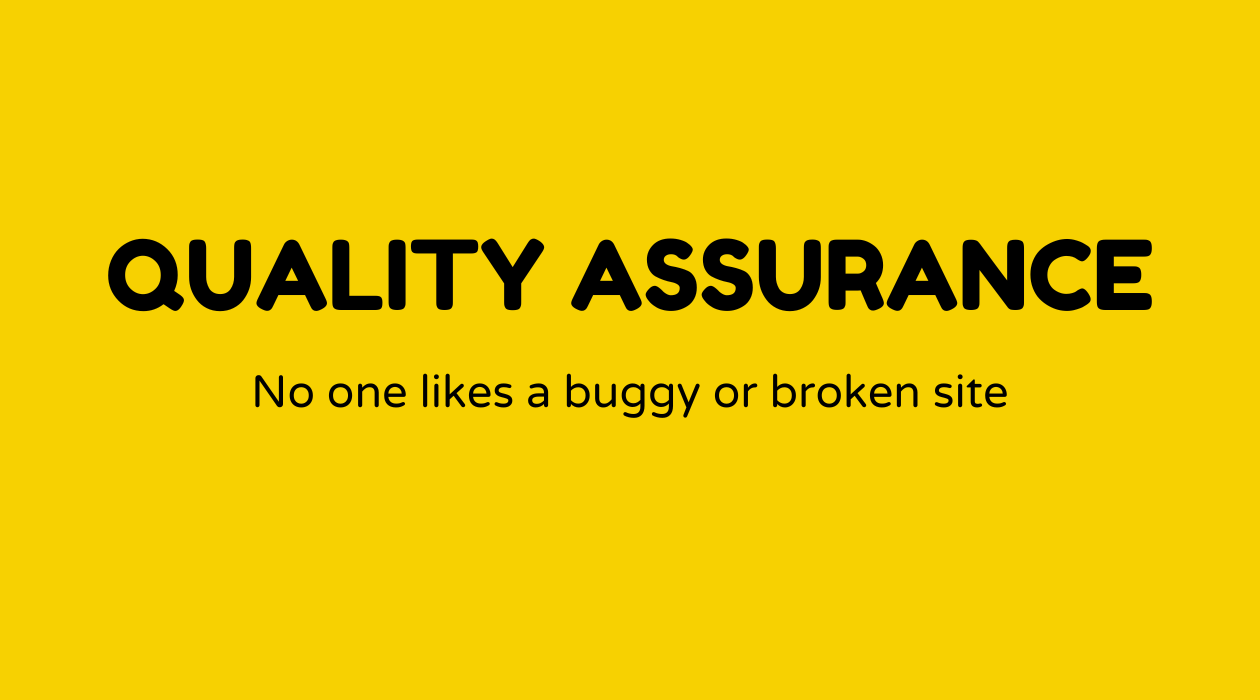Quality Assurance (QA)

Overview of Quality Assurance (QA):
Quality Assurance (QA) serves as a fundamental aspect of any successful product development process. Think of constructing a tower with blocks; QA is like the steady hand that ensures each block is aligned, preventing the entire structure from falling apart. In the technology sector, quality assurance teams operate behind the scenes, diligently testing and retesting applications to confirm they function correctly before reaching users. With software underpinning many daily tasks, from banking apps to social media platforms, a strong QA process is indispensable.
Ensuring software quality goes beyond simple functionality. It also focuses on delivering a user experience that is smooth and satisfying. According to TechBeacon, thorough QA can substantially lower the costs associated with fixing bugs, as investing in defect prevention can save multiple dollars on later repairs.
Why Quality Assurance (QA) Matters:
Have you ever experienced frustration from an app crashing upon launch or annoyance when a basic transaction fails? These situations illustrate the importance of quality assurance. QA guarantees that products are dependable, trustworthy, and meet customer expectations. It serves as a safeguard, confirming that a product works effectively under various conditions.
Reliable QA processes often lead to improved customer satisfaction, which in turn enhances business reputation and profitability. Consider major technology companies like Microsoft or Apple. Their global trust factor is largely attributed to their meticulous quality assurance practices.
What is Quality Assurance (QA):
But what does quality assurance entail? In simple terms, it involves a systematic approach to checking whether a product or service meets set requirements. Contrary to common misconceptions, QA encompasses more than just identifying bugs; it includes monitoring processes, testing products, and evaluating methodologies. This approach ensures ongoing improvements and optimal results.
QA follows a structured plan that includes guidelines for design reviews, inspections, and verification techniques. One recognized methodology within QA is the PDCA cycle (Plan-Do-Check-Act), which is essential for implementing controls and achieving excellence in quality.
How to Implement Quality Assurance (QA):
Adopting quality assurance might seem daunting, but breaking it down into manageable steps can simplify the process. Here’s how to approach it:
-
Define Requirements:
- Establish clear standards and outline user expectations.
-
Planning:
- Create a detailed QA plan that includes testing strategies and timelines.
-
Test Development:
- Design and prepare test cases/scripts, ensuring comprehensive coverage of scenarios.
-
Execution:
- Conduct tests, record defects, and meticulously track results.
-
Review and Address Issues:
- Analyze test outcomes, resolve identified problems, and retest as needed.
-
Final Approval:
- Once the product is free of critical defects and meets quality standards, it is approved for launch.
Examples of Quality Assurance (QA):
The scope of QA is vast, impacting various industries. Here’s a closer look at some noteworthy examples:
-
Software Development:
- Use of Automated Testing Tools such as Selenium or QTP ensures consistent and efficient software assessments.
-
Manufacturing:
- Regular inspections along with adherence to ISO standards enhance product reliability and safety.
-
Food and Beverage:
- HACCP plans (Hazard Analysis and Critical Control Points) verify product safety and quality.
-
Healthcare:
- Customized compliance checklists ensure medical devices operate safely and effectively.
FAQs
What’s the difference between QA and QC?
- QA focuses on ensuring processes are followed to achieve quality products, while QC involves the actual inspection of the products.
How does QA enhance customer satisfaction?
- By ensuring products meet expectations and operate without issues, leading to a favorable user experience.
Is QA solely for large companies?
- No, even small startups can gain from robust QA processes to improve their market credibility.
What are the benefits of automated testing?
- Automated testing saves time and increases accuracy by conducting repetitive tests efficiently without human error.
How has QA evolved within agile methodologies?
- In agile environments, QA has become more integrated, emphasizing continuous testing and collaboration among teams.
Do all industries practice QA similarly?
- No, QA practices vary based on specific industry requirements and standards.



